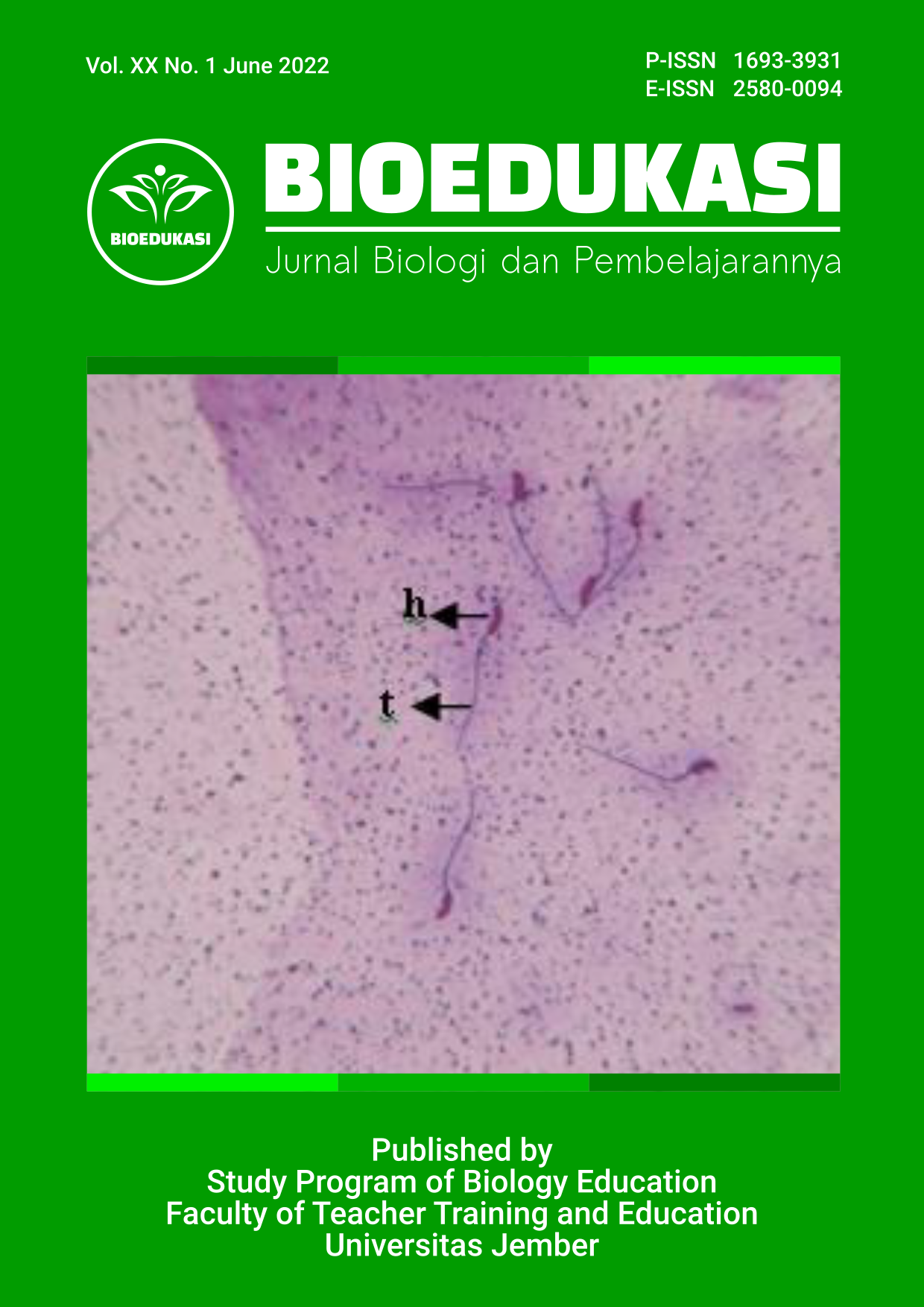PHYTOREMEDIATION POTENTIAL OF Salvinia molesta FOR ORGANIC MATTER COFFEE LIQUID WASTE
Abstract
Coffee liquid waste contains organic matter which can be at risk of increasing water pollution levels. The results of the preliminary research carried out showed that the level of pollution due to coffee liquid waste exceeded the quality standard, with the results of the BOD test results being 23 ppm and COD 72 ppm, so we need a way to reduce pollution. Phytoremediation is a method of natural waste handling using certain plants in collaboration with microorganisms in the media (soil, coral, water) so that it can change contaminants to be reduced or harmless. This study aims to determine the effectiveness of Salvinia molesta phytoremediation in reducing BOD and COD levels. The research design used a completely randomized design (CRD) with four treatments with three replications. The research data were tested using the Analysis of Variety Prints and the Duncan's Multiple Distance Test continued test. The results showed that the effectiveness of Salvinia molesta in reducing BOD levels was found in P3 obtained by an average of 8.37 ppm (73% decrease) and reducing COD levels by an average of 25.37 ppm (73%). Based on these results, it can be concluded that P3 is effective in reducing BOD and COD levels of coffee liquid waste.
References
EPPO. 2016. Salvinia molesta (Salviniaceae). https://www.eppo.int/ Invasive_Plants/iap_list/Salvinia_molesta.htm. [accessed on 13 March 2022]
Fazi S, Amalfitano S, Casentini B et al .2016. Arsenic removal from naturally contaminated waters: a review of methods combining chemical and biological treatments. Rend Fis Acc Lincei 27:51–58
Fikri, Abuyasin Al. 2014. BOD (Biological Oxygen Demand) dan COD (Chemycal Oxygen Demand). Universitas Padjadjaran.
Group, E. F. 2013. 5 Uses for Spent Coffee Grounds. [Online]. Available at: http://www.globalhealingcenter.com/natural-health/5-uses-for-spent-coffee-grounds/.
Hariyadi, Yanuwiadi B, Polii B, Soemarno .2013. Phytoremediation of arsenic from geothermal power plant waste water using Monochoria vaginalis, Salvinia molesta and Colocasia esculenta. Int J Biosci 3:104–111
Hapsari, S. 2016. Kemampuan Tumbuhan Kayu Apu (Pistia statiotes L.) dalam Menyisihkan Kromium Total (Cr-T) dan COD Limbah Elektroplating. Jurnal Teknik Lingkungan, Volume 5 Nomor 4.
Hidayat, A. 2017. Kinetika Reaktor Batch. Retrieved Mei 31, 2019, from https://id.scribd.com/Kinetika-Reaktor-Batch.
Irhamni. 2020. Efektifitas Tumbuhan Air Dalam Menyerap Logam Berat (Cr, Hg, Pb) secara Fitoremediasi Pada Lindi Tempat Pembuangan Akhir Kota Banda Aceh (Doctoral dissertation). Program Pascasarjana Universitas Sumatera Utara, Medan.
Irawanto, R. d. 2017. Kemampuan Tumbuhan Akuatik Salvinia molesta dan Pistia stratiotes sebagai Fitoremediator Logam Berat Tembaga. Pros SemNas Masy Biodiv Indon, Volume 3, Nomor 3, Halaman 438445.
Jasrotia S, Kansal A, Mehra A. 2017. Performance of aquatic plant species for phytoremediation of arsenic-contaminated water. Appl Water Sci. 7:889–89
Kumari S, Kumar B, Sheel R. 2017. Biological control of heavy metal pollutants in water by Salvinia molesta. Int J Curr Microbiol App Sci 6:2838–2843
Mahyatun, W. O., Samang, L., & Zubair, A. 2014. Fitoremediasi Logam Cd Menggunakan Kombinasi Eceng Gondok dan Kayu Apu dengan Aliran Kontinyu. Repository Universitas Hasanuddin, 1–12.
Mcgowan, G. 2014. Self Purification. Retrieved Juni 10, 2019, from https://id.scribd.com/doc/Self-Purification.
Miranda CV, Schwartsburd PB. 2016. Aquatic ferns from Vicosa (MG, Brazil): Salviniales (Filicopsida; Tracheophyta). Braz J Bot 39:935–942.
Muhajir, M. S. 2013. Penurunan Limbah Cair BOD dan COD pada Industri tahu Menggunakan Tanaman Cattail (Typha agustifolia) dengan Sistem Constructed Wetland. Universitas Negeri Semarang.
Newete SW, Byrne MJ. 2016. The capacity of aquatic macrophytes for phytoremediation and their disposal with specific reference to water hyacinth. Environ Sci Pollut Res Int 23:10630–10643
Nicomel NR, Leus K, Folens K, Voort PV, Du Laing GD. 2016. Technologies for arsenic removal from water: current status and future perspectives. Int J Environ Res Public Health 13:62. https://doi.org/10.3390/ijerph13010062
Ningsih, D. A. 2017. Uji Penurunan Kandungan BOD, COD, dan warna Pada Limbah Cair Pewarnaan Batik Menggunakan Scirpus grossus dan Iris pseudacorus dengan Sistem Pemaparan Intermittent. Institut Teknologi Sepuluh November.
Nurafifah, S. 2016. Pengaruh Kombinasi Kiambang (Salvinia molesta) dan Zeolit terhadap Penurunan Logam Berat Kadmium.
Nursyafitri, E. 2019. Kemampuan Metode Kombinasi Filtrasi Fitoremediasi Tanaman Teratai Dan Eceng Gondok Dalam Menurunkan Kadar BOD Dan COD Air Limbah Industri Tahu. Sulolipu: Media Komunikasi Sivitas Akademika Dan Masyarakat, 17(2), 11.
Peraturan Pemerintah RI No. 82 Tahun 2001 tentang Pengelolaan Kualitas Air dan Pengendalian Pencearan Air.
Pribadi, R. N. 2016. Pengaruh Luas Penutupan Kiambang (Salvinia molesta) terhadap Penurunan COD, Amonia, Nitrit, dan Nitrat pada Limbah Cair Domestik (Grey Water) Dengan Sistem Kontinyu. Jurnal Teknik Lingkungan, Vol.5, No. 4.
Rahmawati, A. B. 2016. Kemampuan Tanaman Kiambang (Salvinia molesta) dalam Menyisihkan BOD dan Fosfat pada Limbah Domestik (Grey Water) dengan Sistem Fitoremediasi Secara Continue. Jurnal Teknik Lingkungan, Vol.5, No. 4.
Rezania S, Taib SM, Md Din MF, Dahalan FA, Kamyab H. 2016. Comprehensive review on phytotechnology: heavy metals removal by diverse aquatic plants species from wastewater. J Hazard Mater 318:587–599
Rukmawati, B. S. 2015. Perbaikan Kualitas Limbah Cair Pengolahan Kopi Menggunakan Sirkulasi Pada Proses Fitoremediasi. Universitas Jember.
Rukmi, D. P. 2014. Efektivitas Eceng Gondok (Eichhornia crassipes) Dalam Menurunkan Kadar Deterjen, BOD, dan COD Pada Air Limbah Laundry. Universitas Jember.
Sarwar N, Imran M, Shaheen MR, Ishaque W, Kamran MA, Matloob A, Hussain S. 2017. Phytoremediation strategies for soils contaminated with heavy metals: modifications and future perspectives. Chemosphere 171:710–721.
Singh, D.; Tiwari, A.; Gupta, R. 2012. Phytoremediation of lead from wastewater using aquatic plants. Journal of Agriculture Technology, 8(1), 1–11.
Suprihatin, H. 2014. Kandungan Organik Limbah Cair Industri Batik Jetis Sidoarjo dan Alternatif Pengolahannya. Institut Teknologi Pembangunan Surabaya.
Yuliani, D. E. 2013. Analisis Kemampuan Kiambang (Salvinia molesta) untuk Menurunkan Konsentrasi Ion Logam Cu (II) Pada Media Tumbuh Air. Jurnal Kimia Mulawarman, Volume 10 Nomor 2.

This work is licensed under a Creative Commons Attribution-NonCommercial-NoDerivatives 4.0 International License.









 https://orcid.org/0000-0003-1920-0515
https://orcid.org/0000-0003-1920-0515
